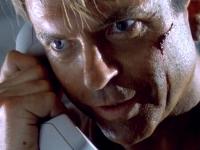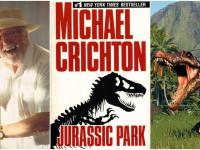Jurassic Park: 10 Most Iconic Moments, Ranked
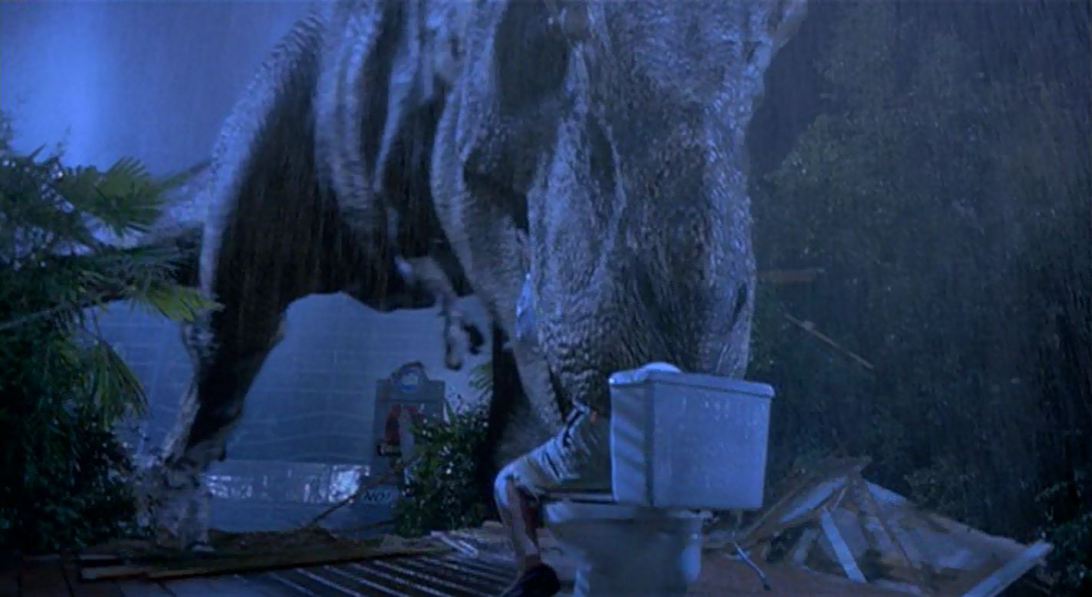
Who could ever forget Steven Speilberg's epic 1993 film Jurassic Park? Here are 10 iconic moments from the movie which still hold up today.
Jurassic Park, Steven Spielberg’s film adaptation of Michael Crichton’s bestselling novel, broke a ton of box office records when it hit theaters in 1993. It shot past Spielberg’s own E.T. to become the highest-grossing movie ever made. Moviegoers were captivated by the sense of wonder that came along with watching dinosaurs walk the Earth again.
And, all these years later, that sense of wonder remains. Jurassic Park is a timeless classic, filled with unforgettable scenes that, no matter how many times you’ve seen the movie, never fail to elicit an emotional response. So, here are Jurassic Park’s 10 Most Iconic Moments, Ranked.
10 Sattler Treats The Sick Triceratops

There’s a general rule in the Jurassic Park franchise that if you respect dinosaurs, you’ll survive. The government suits trying to weaponize them are doomed, but a character like Dr. Ellie Sattler, who rushes to the side of a sick Triceratops to treat them, earns her survival.
The practical effects in this scene are incredible. There’s also some great comic relief, as Malcolm approaches the Triceratops’ dung and bluntly says, “That is one big pile of sh*t.”
9 Nedry Gets Outsmarted

Wayne Knight was looking forward to his character, Dennis Nedry, getting a really gruesome death scene, as he does in the source material, and was a little disappointed that all the bloodshed happened off-screen. But the death scene as it stands is still pretty gruesome.
His car gets stuck in some wet mud in the pouring rain, and then he encounters a Dilophosaurus. He underestimates the dinosaur’s intelligence, and this becomes his downfall. After he’s attacked in the car, his blood seeps out into the rushing water and dilutes it with red.
8 “Dinosaurs Eat Man. Woman Inherits The Earth.”

John Hammond is miffed that the paleontologists he invited to his park don’t immediately endorse it and question his dangerous decision-making. Ian Malcolm runs through the course of history that led to Hammond cloning dinosaurs and creating Jurassic Park: “God creates dinosaurs, God destroys dinosaurs. God creates Man, Man destroys God, Man creates dinosaurs.”
And then, Ellie Sattler proves herself to be a match for Malcolm when she continues his line of thinking: “Dinosaurs eat Man. Woman inherits the Earth.”
7 Objects In Mirror Are Closer Than They Appear

Like all great directors, Steven Spielberg is a master of telling audiences multiple things with one image. During the scene in Jurassic Park in which a jeep is being chased by a T. rex, he includes a closeup of one of the jeep’s side-view mirrors, bearing the phrase, “objects in mirror are closer than they appear,” with the mirror’s frame filled by the roaring T. rex closing in.
In this one image, we get a sense of the impending danger, because the T. rex looks extremely close, and we’re being told by a sign that we recognize from actual side-view mirrors that it’s even closer than we think.
6 “Life, Uh... Finds A Way.”
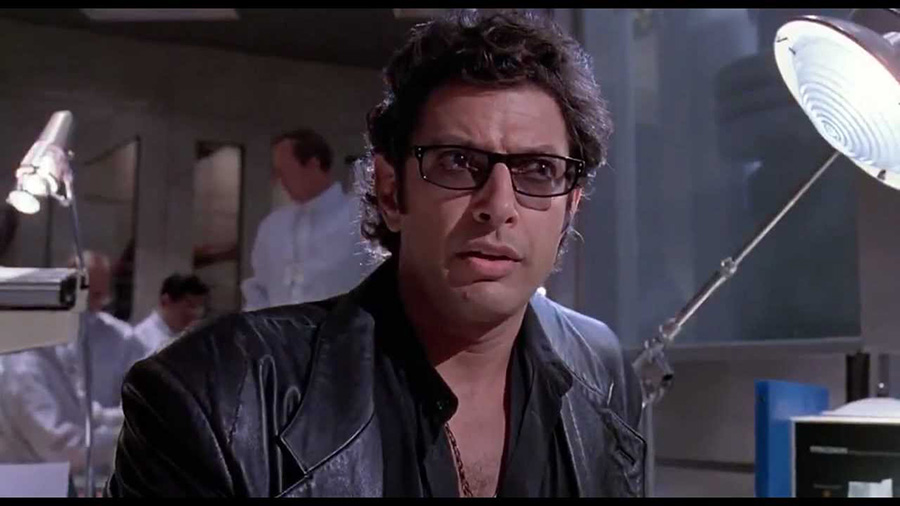
In four words (not including Jeff Goldblum’s signature fillers), Ian Malcolm perfectly summed up chaos theory, his specialist subject: “Life, uh, uh, uh...finds a way.”
This quote has become so iconic that Goldblum—and the franchise—will forever be associated with it. Life finding a way is the M.O. of these stories; humans screw with nature, then nature fights back.
5 “When You Gotta Go, You Gotta Go.”

The first time the T. rex kills a character in Jurassic Park is unforgettable. Donald Gennaro, John Hammond’s slimy lawyer trying to justify his reckless endangerment of human lives, flees the T. rex in terror and locks himself in a bathroom stall. Malcolm quips, “When you gotta go, you gotta go.”
Then, the T. rex pursues Gennaro and promptly removes the roof from the bathroom he’s hiding in. The low-angle shot of Gennaro sitting on the toilet, looking up at the T. rex, before being mercilessly eaten, is beautifully shocking.
4 “Clever Girl!”
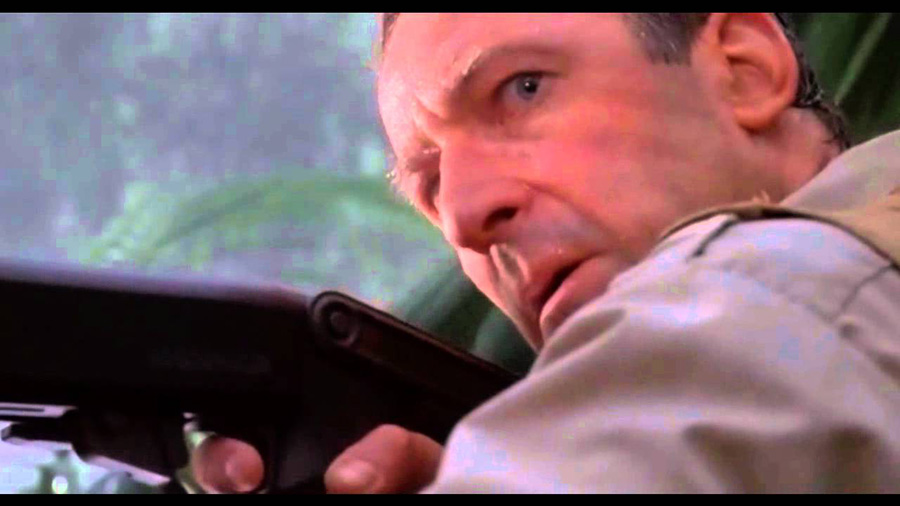
Talk about famous last words. As Muldoon hunts down one of the escaped raptors, he realizes he’s been outmatched as it emerges from some shrubbery to his left. He simply says, “Clever girl!,” before the raptor pounces on him. It’s a really effective jump scare, and the takedown is framed from a low angle to make the raptor feel truly menacing.
This subverts the rule that characters who respect the dinosaurs get to live because Muldoon has a great respect for the dinosaurs, but, then again, he also wants to hunt them.
3 When Dinosaurs Ruled The Earth

The original script for Jurassic Park didn’t contain a big finale. Some crew members approached Steven Spielberg and suggested adding one, and they got to work figuring it out. The final showdown between the T. rex and the velociraptors is more than just sheer spectacle (although it’s got that in spades).
There’s a lot of thematic resonance in the film’s two antagonists—the T. rex and raptors that have been separately terrorizing the characters—taking care of each other. The flailing “When Dinosaurs Ruled the Earth” banner hammers home the point that nature will always win out when people like John Hammond play God.
2 Grant And Sattler’s First Dinosaur Encounter

Jurassic Park’s CGI has aged surprisingly well, considering how early in the technology’s development it was. The scene in which Dr. Alan Grant and Dr. Ellie Sattler first arrive on Isla Nublar and witness a living dinosaur for the first time is just as breathtaking today as it was in 1993.
Sam Neill and Laura Dern play the scene spectacularly, looking up in astonishment at a grazing Brachiosaurus that wasn’t actually there. John Hammond boldly says, “Welcome to Jurassic Park,” as John Williams’ beautifully composed theme booms onto the soundtrack.
1 Velociraptors In The Kitchen

Jurassic Park’s raptors-in-the-kitchen set piece, in which Lex and Tim are hunted through a kitchen by some hungry velociraptors, is a masterclass in suspenseful filmmaking. Martin Scorsese once said that directing movies is all a matter of what is in the frame and what isn’t in the frame.
Steven Spielberg makes fantastic use of the frame in this scene. He inventively uses imagery like the reflective surfaces of the cabinets to create tension, and symbolically, the kitchen setting works brilliantly, positioning Lex and Tim as raptor food.
Source: https://screenrant.com/




